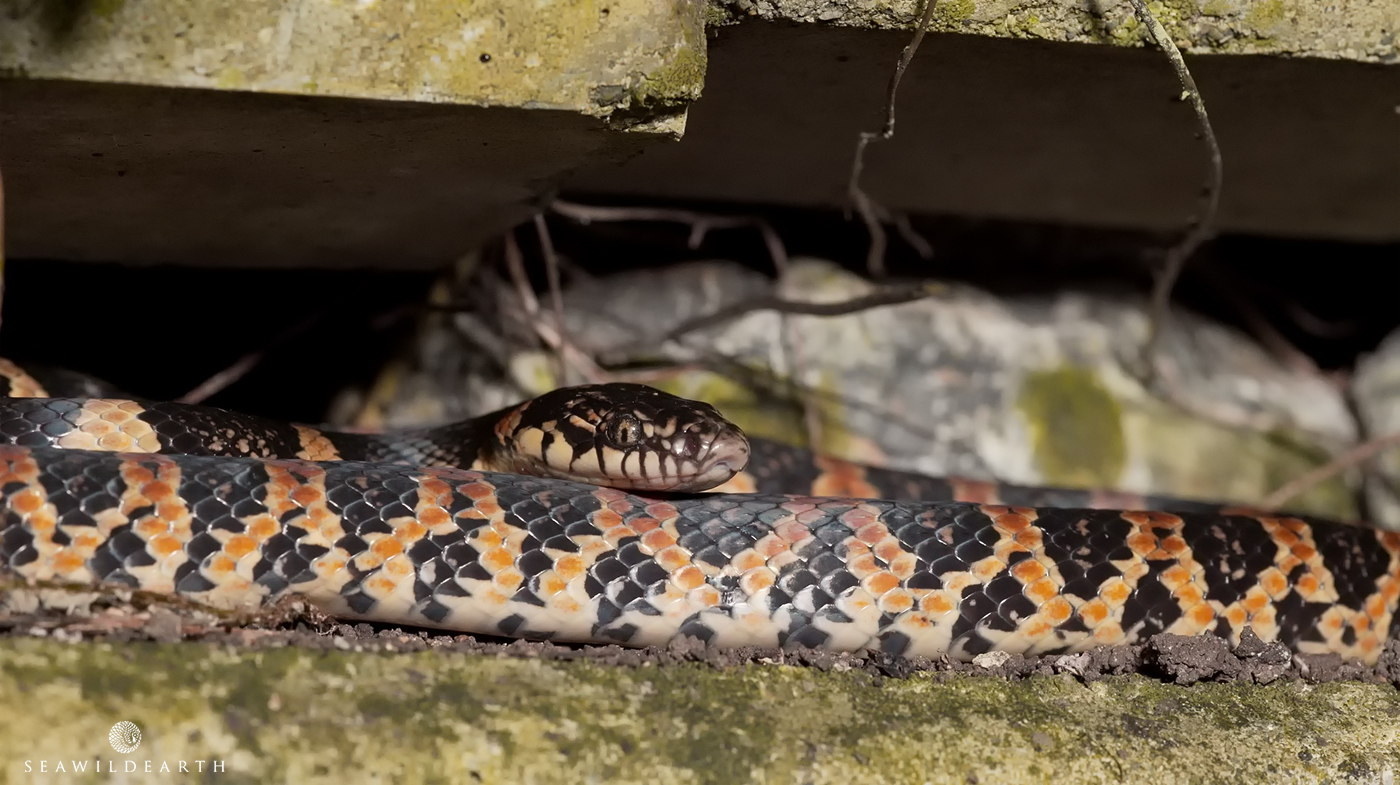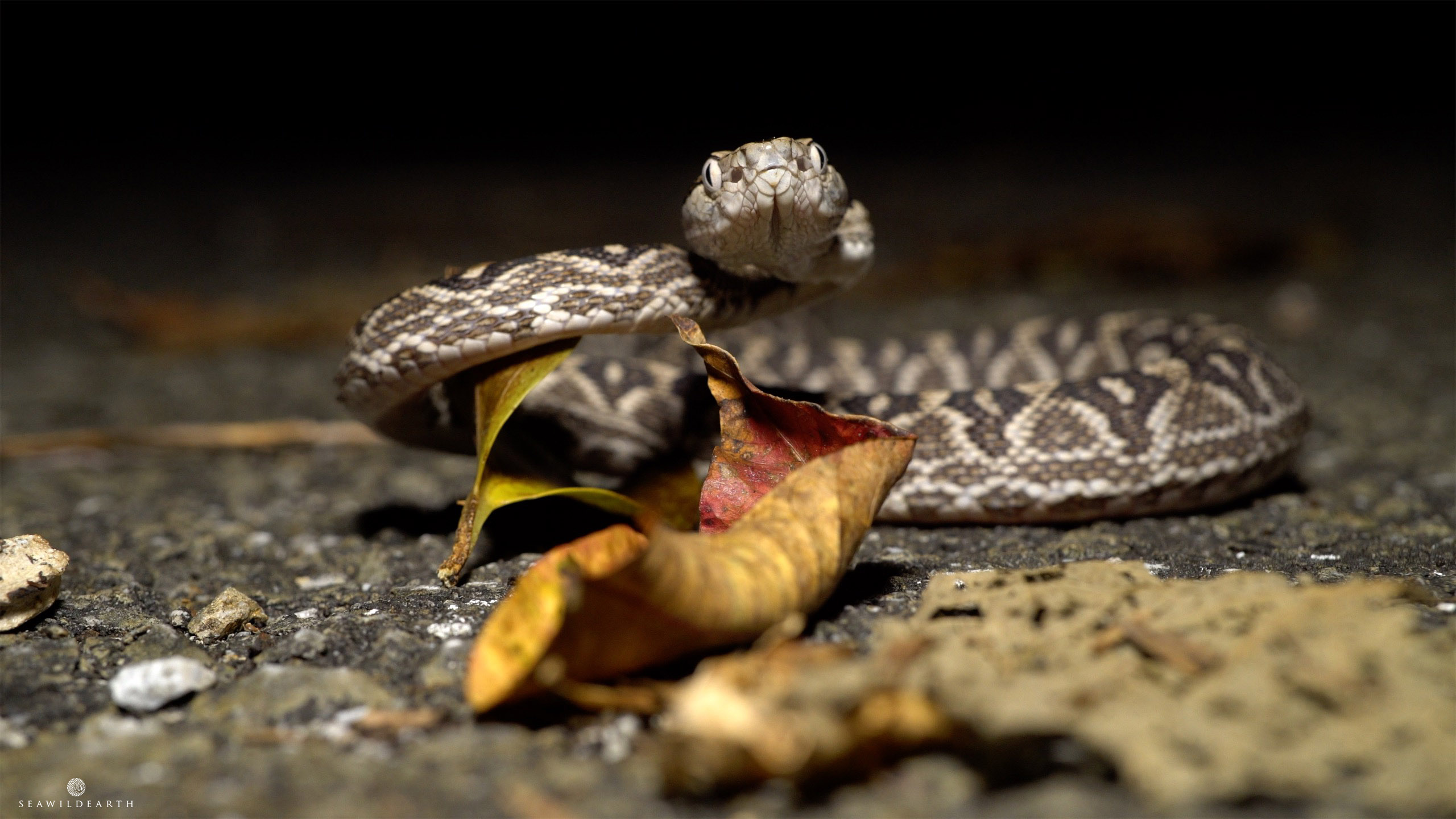There's Silver in Them Thar Hills!
Not all that glistens is Gold, and nor is it always inanimate.
Whenever I head out to film wildlife, in this case the Snakes of Okinawa, whether that be in the green rolling hills of the Yambaru jungles of the North or elsewhere in the Ryukyu Islands, I never know what I will find. Silver, I never thought I would find Silver in the Yambaru. And it came to me! What am I on about? Well I'm not one to go in hunt for minerals for starters. I am indeed talking about an event that allowed me to accomplish something that I think, on all research and scouring the Internet thus far since the event, was basically a Worlds first.
Given that I'm looking to up my filming efforts toward wildlife filming to document and showcase the natural diversity of species and encounters I have with them in Okinawa, I set out recently to film snakes. And film them I did. I was looking for a way to try and string a series of clips together of the beautifully colored Ryukyu Odd Tooth Snake or Akamata, as it's locally known. I'd filmed them at various times on my wildlife treks and have always wanted to do a short piece about them. I headed to a spot where I'd filmed them quite extensively only to get skunked.

The Ryukyu Odd Tooth Snake or 'Akamata' as it is known by the locals. Non venomous and it will also eat Habu Pit Vipers if it gets a chance.
Opting to go an look at another location which entailed an additional 50minute drive I set in for the long haul. In these dark hours time is not the factor. I love being out in the wilds at any time. To have the window of my van open as the cool Ocean road breeze rushes in. Not only does it serve to keep me awake but it also envelops my senses in the very sounds and odors of the Ocean, and as anyone knows me, the Ocean is the one thing that grounds me. I can sit, walk or drive along its shorelines for hours without a care. The time flew past.
Arriving at my spot I 'd noted things were somewhat wet. This is a good thing. At night these damp patches attract Frogs and Snails, with Frogs being top of the menu items for the Akamata I had some optimism of my chances. I looked, and sought and scoured. Nada, zip, zilch. "Jeez, was I gonna get skunked again"? For a place that normally yielded great encounters, to have filmed one small Akamata sleeping way inside a drainage ditch, one fleeting glance of a ground gecko and a snail, it wasn't turning out to be a great evening.
I decided to call it quits and headed to the van. It was fast approaching 0230hrs and I needed about 90min to get home. No sleep for me tonight! Getting to the van I still had the camera gear set up and opted to drive very cautiously at around 5km/h for the remaining 3km or so until I got to the main coastal road. I'd pulled off into a favored jungle road of mine. Along both edges of the road were water drainage ditches which are always a good source of filming topics as some wildlife species once in these ditches could only exit by way of using the small ramps built in to facilitate the very aspect of wildlife escape. This was especially true for the Turtle species, and some smaller snake species too.
And then I saw it. About 80cm in length what looked to be a 'Habu', a venomous Pit Viper, but of the three main species that inhabit Okinawa and all of which I'd encountered on numerous times, the marking on this snake were all wrong. It was a lot lighter in color for starters. While the pattern on its triangular shaped head was similar to that of the Okinawa Habu, it was totally different, if you see what I mean. I initially thought it was a Taiwan Beauty Snake but it was too small in girth for that, the head was the wrong shape. There was something about this snake that was so different, and then I noticed it. The Eyes.
There is only one species of Habu with eyes as white as those into which I was transfixed. The base coloration of the snake was also a slight giveaway. Not only was this a first for me but I was reeling with the potential fact that I was also potentially documenting for the first time on video the deliberate, confident and somewhat provocative movements of what is known as the 'Silver Habu'. This is a beautiful snake, the image below a still grab from video footage taken during my encounter.

A stunning encounter, a first for me and potentially in the filming of this amazing looking snake.
I managed to shoot around six minutes of footage during my encounter with this stunning animal. Making sure to err on the side of caution I was using a 60mm f2.8 lens that allowed me some distance from the biting end of the snake. Hoping to add a 180mm macro lens to the arsenal to allow me a greater distance from subjects such as this with striking ability. Given that a future project will entail my seeking out the much bigger, read greater striking distance, Okinawa Habu I think that will be the best way to plan for shooting that.
After some 20minutes the Silver Habu tired of its humanoid plaything and slinked back off into the jungle. Will I ever encounter it again? I don't know if snakes are territorial but I have the location 'pinged' and will from time to time head back to that area to check and see if I can find more Silver in the Yambaru.
Watch this spot!
"The snake kills by squeezing very slowly. This is how the civilized world slowly, slowly pushes into the forest and takes away the world that used to be".
James Cameron
About the Author
Internationally recognized as a provider of quality mixed media Mark Thorpe is always on the search for captivating content.

Photographer / Cameraman
Mark Thorpe
Emmy Award Winning wildlife cameraman and Internationally published landscape photographer Mark Thorpe has been an adventurer since he could walk! Spending 17yrs as an Underwater Cameraman at the start of his imaging career the highlight of which was being contracted to work with National Geographic. In that role as a field producer and cameraman he's been privy to a mixed bag of hair raising adventures. For some reason he was always selected for projects relating to large toothed marine predators such as Great White and Tiger Sharks, Sperm Whales and Fur Seals. Additionally he has also been active within Southern Africa on terrestrial projects dealing with a wide array of iconic wildlife.
Currently based in Okinawa, Japan he's always on the lookout for his next big adventure. He shares his exploits online with a totally organic social audience in excess of 200,000. Sponsored by a number of photographic industry manufacturers he is constantly scouring the islands for captivating landscape and oceanscape compositions. Videography wise he continues to create short photographic tutorial videos as well as creating content about the diversity of wildlife within Okinawa and the Ryukyu Islands of Southern Japan.
Mark has just created a Patreon channel where he's hoping to raise an audience of supporters who through small monthly shows of appreciation will allow him to concentrate on the creation of a wildlife and landscape imaging themed YouTube Channel. If you feel that is something you'd like to support you can visit his Patreon Channel for more information.
